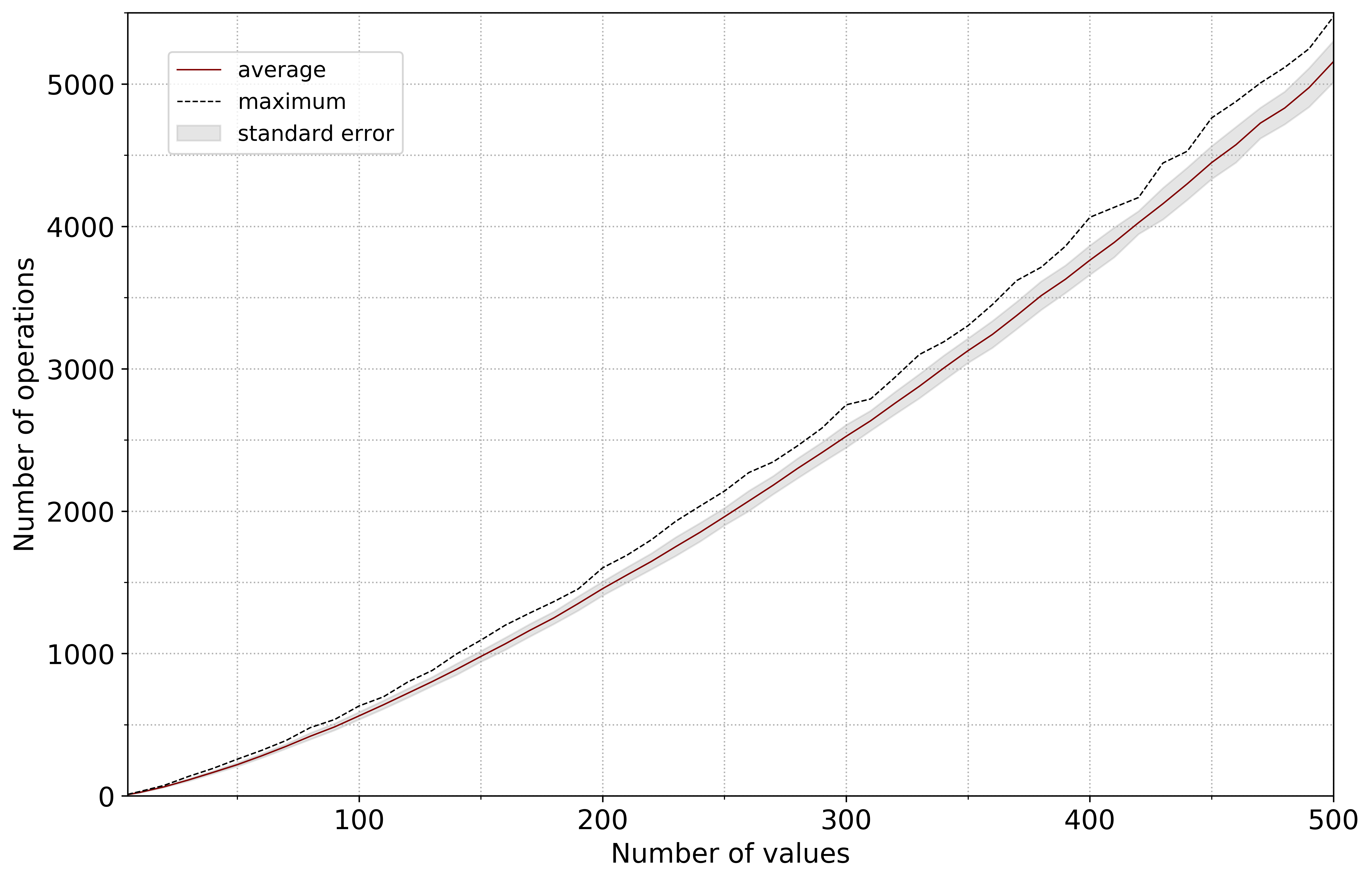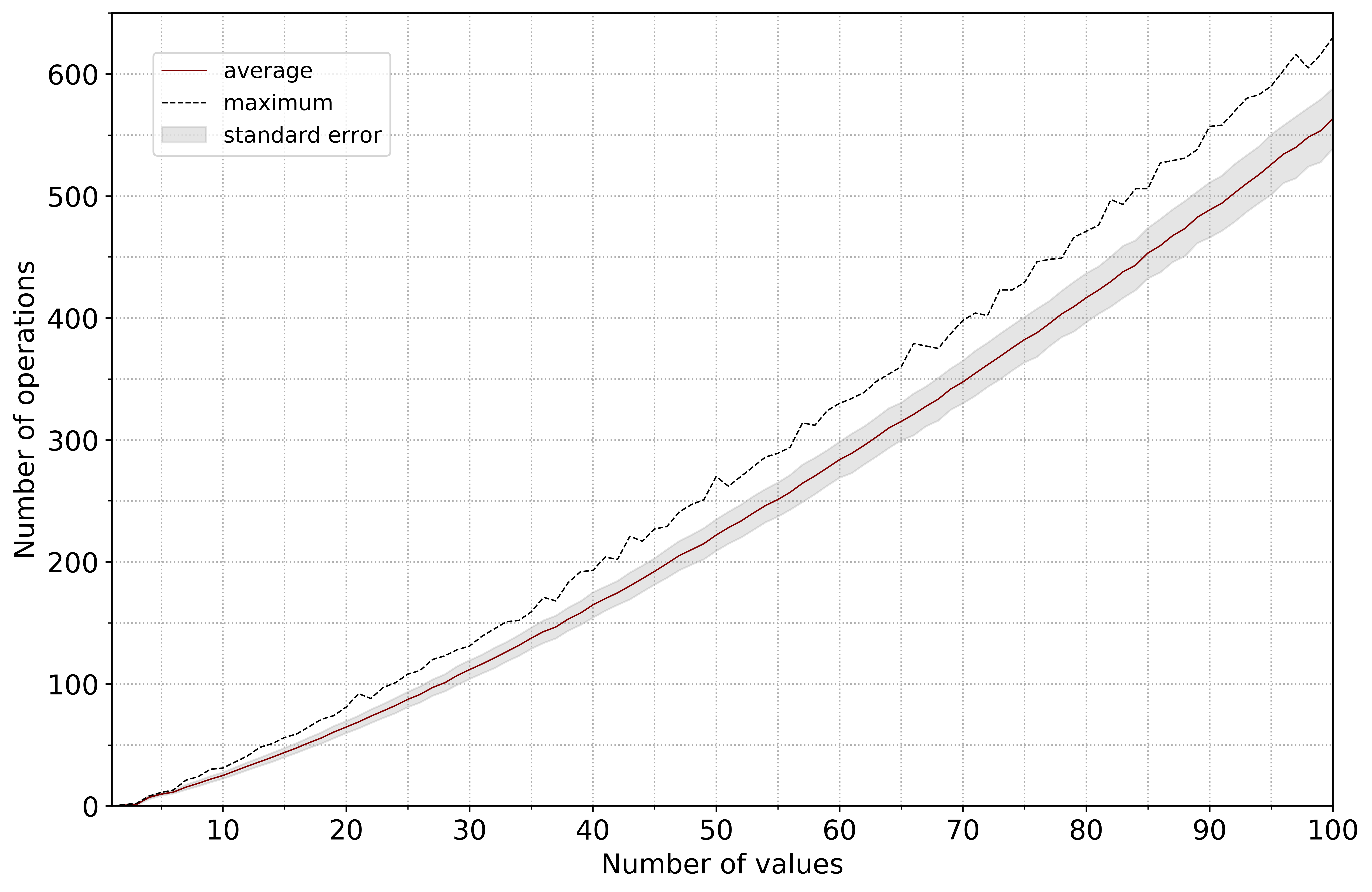This project is part of the official curriculum at School 42.
In School 42, almost every project must be written to comply with. coding standard (also known as the "Norm"). As a result, the implementation of certain parts may appear strange.
- Official instructions
- The goal of this project is to practice sorting algorithms and design a new one, optimized for a given data structure.
- As per instructions, the project is realised using a C library compiled during previous projects.
The goal is to design an algorithm that would sort a list of integers without any duplicated. The algorithm should operate on two stacks, a and b, using the shortest sequence of the following operations:
sa– Swap the first two elements at the top of stack a. Do nothing if there is only one or no elements.sb– Swap the first two elements at the top of stack b. Do nothing if there is only one or no elements.ss– Dosaandsbat the same time.pa– Take the first element at the top of b and put it at the top of a. Do nothing if b is empty.pb– Take the first element at the top of a and put it at the top of b. Do nothing if a is empty.ra– Shift up all elements of stackA by one. The first element becomes the last one.rb– Shift up all elements of stack b by one. The first element becomes the last one.rr– Doraandrbat the same time.rra– Shift down all elements of stack a by one. The last element becomes the first one.rrb– Shift down all elements of stack b by one. The last element becomes the first one.rrr– Dorraandrrbat the same time.
The project yields three programs:
checker- Gets as an argument the stack a formatted as a list of integers (the first argument should be at the top of the stack)
- Read instructions on the standard input, each instruction will be followed by
\n. Once all the instructions have been read, checker will execute them on the stack received as an argument. - If after executing those instructions, stack a is actually sorted and b is empty, then checker must display
OKfollowed by a\non the standard output. In every other case, checker must displayKOfollowed by a\non the standard output. - In case of error, you must display
Errorfollowed by a\non the standard error. Errors include for example: some arguments are not integers, some arguments are bigger than an integer, there are duplicates, an instruction don’t exist and/or is incorrectly formatted.
push_swap- Gets as an argument the stack a formatted as a list of integers (the first argument should be at the top of the stack)
- The program must display the smallest list of instructions possible to sort the stack a, the smallest number being at the top.
- In case of error, you must display
Errorfollowed by a\non the standard error. Errors include for example: some arguments aren’t integers, some arguments are bigger than an integer, and/or there are duplicates.
random-list-generator- A simple Python script that outputs a random permutation of a given number of positive integer values
The project is then checked as follows
> ARG=$(./random-list-generator <number of values>); ./push_swap $ARG | ./checker $ARG
OK(NOTE that the above command doesn't work on zsh, so if you're using it, run this instead sh -c 'ARG=$(./random-list-generator <number of values>); ./push_swap $ARG | ./checker $ARG'.)
For efficiency, two different algorithms are utilized
- simple: for up to six values
- advanced: for more than six values
- Manually code how to sort a stack of up to three values. With only six possible permutations this is easy to do.
- If there are over three values, push all values less than the median onto stack b, sort two stacks independently and then merge.
Push all numbers, except for 2, from stack a to stack b.
At each iteration, calculate the number of operations necessary to push a number from stack b to stack a, such that it ends up in the right place on stack a (without introducing any conflicts). Take into account that ra and rb can be accomplished simultaneously with rr etc. Do this for all numbers in stack b, select the one with the least number of operations and push back to stack a.
For example, say we have
STACK A: 4->5->1->2
STACK B: 6->3
and
6: 2 rotations (2 x ra) and 1 push (1 x pa)
3: 1 rotation (1 x rb) and 1 push (1 x pa)
Hence, we start by pushing 3. Then
STACK A: 3->4->5->1->2
STACK B: 6
we only have 6 left in stack b, so we push it with 2 x rra and 1 x pa.
At this point, stack b is empty and stack a is "circulary" sorted (i.e. it has no conflicts but the smallest number may not be on top).
For example, our stack a after steam 2 is
STACK A: 6->1->2->3->4->5
It would take 1 x ra and 5 x rra to get 1 to the top. Therefore, we choose perform 1 x ra and we're done.
Here is a graph describing the performance of this algorithm in the range between 1 and 500 values. Each data point consists of 100 measurements.
And here's another one, for the range between 1 and 100 values. Each data point consists of 500 measurements.
To build executables, run
git clone git@github.com:almayor/push_swap.git
cd push_swap
git submodule update --init --recursive
makeTo run tests (unit and functional), run
make testor, if you wish to skip unit tests,
make test TEST-UNIT=0Finally, if you wish checker to print stacks after each operation (e.g. for debugging purposes), you can do with
./checker -v <numbers>My thanks go to @jmalik at the Moscow branch of School 42, discussions with whom have greatly improved my understanding of the problem and contributed to STEP 2 of my algorithm. I am also grateful to the entire team behind School 42, as well as to my other fellow students for help and support. Finally, the push swap visualizer project by o-reo has been a veritable treasure
If you have any questions, please contact me on Github.

